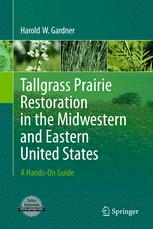

Most ebook files are in PDF format, so you can easily read them using various software such as Foxit Reader or directly on the Google Chrome browser.
Some ebook files are released by publishers in other formats such as .awz, .mobi, .epub, .fb2, etc. You may need to install specific software to read these formats on mobile/PC, such as Calibre.
Please read the tutorial at this link: https://ebookbell.com/faq
We offer FREE conversion to the popular formats you request; however, this may take some time. Therefore, right after payment, please email us, and we will try to provide the service as quickly as possible.
For some exceptional file formats or broken links (if any), please refrain from opening any disputes. Instead, email us first, and we will try to assist within a maximum of 6 hours.
EbookBell Team

5.0
68 reviewsTallgrass Prarie Restoration in theMidwest and Eastern United States: A Hands-On Guide describes all aspects of restoring tallgrass prairie. Outlined are techniques from creating a prairie from scratch to improving diversity of existing prairies. The importance of selecting species for soil type is emphasized in this book. Methods are described for soil preparation, seed collection, seed treatment for germination, and planting rates. After creating a prairie, management is essential, such as safely conducting controlled burns and eliminating aggressive alien plants. Prairie restoration is essential, not only for aesthetic beauty, but prairies provide food for a variety of insects evolved to feed on our native plants. Insects in turn sustain a population of native birds, amphibians, and reptiles. Described in detail are over 200 species of grasses and forbs most commonly found in tallgrass prairies, most with accompanying photo illustrations. An appendix outlines about 900 additional species that are occasionally found on prairies. In addition, the Springer website illustrates detailed scanned herbarium samples and scanned seeds with accompanying seed-heads. These digitally scanned samples are invaluable for positive identification. This book is recommended for students, landscapers, horticulturists, hobbyists, and land managers. About the Author: Dr. Harold W. Gardner received a Ph.D. from Penn State University in biochemistry. His primary area of research was enzymatic oxidation of fatty acids, which serve as bio-signals in higher plants and fungi. Although his research took him to Hawaii, Sweden, California, and Illinois, he spent more than 30 years in Illinois where he became obsessed with attractive prairie eco-systems. Others joined him in prairie restoration efforts, eventually becoming known as the “Prairie Dawgs.” The Prairie Dawgs continue their dedication to prairie restoration in Illinois. Upon retirement to a farm in Pennsylvania, Gardner discovered that prairies also thrive in the East, where he manages about 20 acres of prairie.